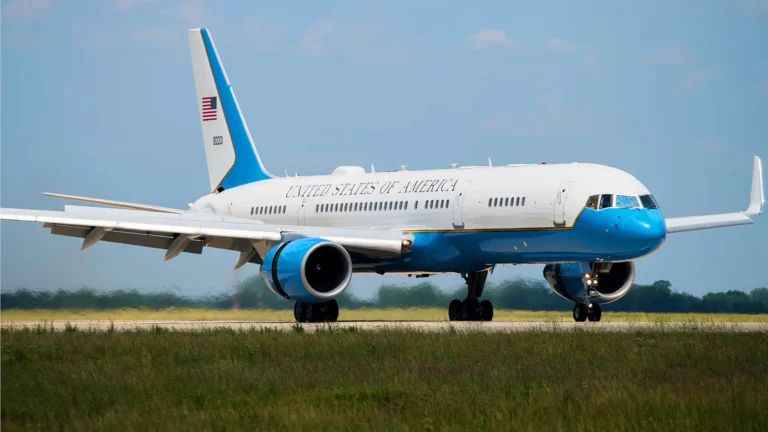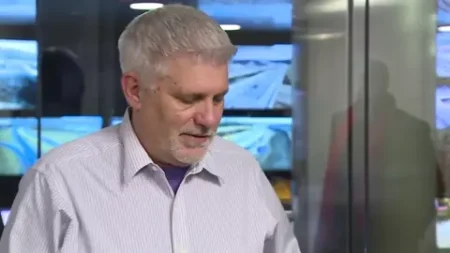President Donald Trump narrowly avoided a mid-air disaster while flying to the United Kingdom. The incident took place on a Tuesday, when Air Force One came within eight miles of a Spirit Airlines plane. The near miss raised serious questions about aviation safety, pilot conduct, and air traffic control systems.
According to reports, Air Force One was en route to London’s Windsor Castle during Trump’s visit. At the same time, a Spirit Airlines flight was headed toward Boston’s Logan International Airport. The two planes entered the same airspace, creating a dangerous situation.
Air traffic controllers at the New York Center quickly noticed the problem. They instructed the Spirit Airlines pilot to change course by turning 20 degrees to the right. However, the pilot did not respond to the first command. Controllers repeated the instruction three times, but the pilot failed to act. On the fourth attempt, the controller raised his voice and demanded full attention. Only then did the Spirit aircraft finally change direction.
Officials later revealed that the Spirit pilot had been distracted by an iPad while flying. This lapse in attention led to delayed responses and forced controllers to intervene repeatedly. The controllers also warned the pilot to remain alert, pointing out that a large white and blue aircraft was within eight miles of his position. That aircraft was Air Force One, carrying the U.S. president.
The close encounter shocked aviation experts. A gap of only eight miles between two aircraft at cruising altitude is considered extremely unsafe, especially when one of the planes carries a head of state. Experts stressed that even a brief loss of focus in such situations could lead to disaster.
Air Force One is known worldwide as one of the most secure planes. It has advanced defense systems, constant monitoring, and top-tier communication channels. Still, this event shows that human error by another airline can put even the most powerful passenger at risk. The near miss also highlights how important coordination between pilots and air traffic control remains in crowded skies.
Spirit Airlines has faced criticism in the past for service issues, but safety concerns of this scale are rare. Aviation authorities are expected to investigate the pilot’s actions, especially the claim that he was operating an iPad during flight. Commercial pilots are required to give full attention to cockpit instruments and air traffic control instructions at all times.
Trump’s plane continued safely to London after the Spirit jet adjusted its path. Passengers on the commercial flight were not aware of the danger. However, the event has already fueled debate on whether stricter monitoring systems should be put in place to prevent such lapses.
Aviation regulators emphasize that air traffic controllers are the last line of defense in preventing collisions. Their quick actions ensured that the two planes kept enough distance. Still, repeated calls and warnings to the Spirit pilot suggest a lack of immediate awareness in the cockpit.
This incident also brings back global focus on the importance of pilot training and discipline. Experts note that distraction in the cockpit, whether from devices or fatigue, has caused accidents in the past. While this case ended without tragedy, it serves as a reminder that strict attention and professional conduct are vital to safety in the skies.
Air Force One near miss cases are rare, but they underline a truth that even advanced technology cannot remove all risks. Human factors remain critical in aviation. The role of pilots and controllers cannot be replaced, and their vigilance is essential to protect lives.
As aviation travel continues to expand worldwide, safety protocols must be updated and enforced. Regulators may also review policies about personal device usage during flights. For now, the Air Force One near miss stands as a warning about how quickly routine flights can turn dangerous when attention slips.







